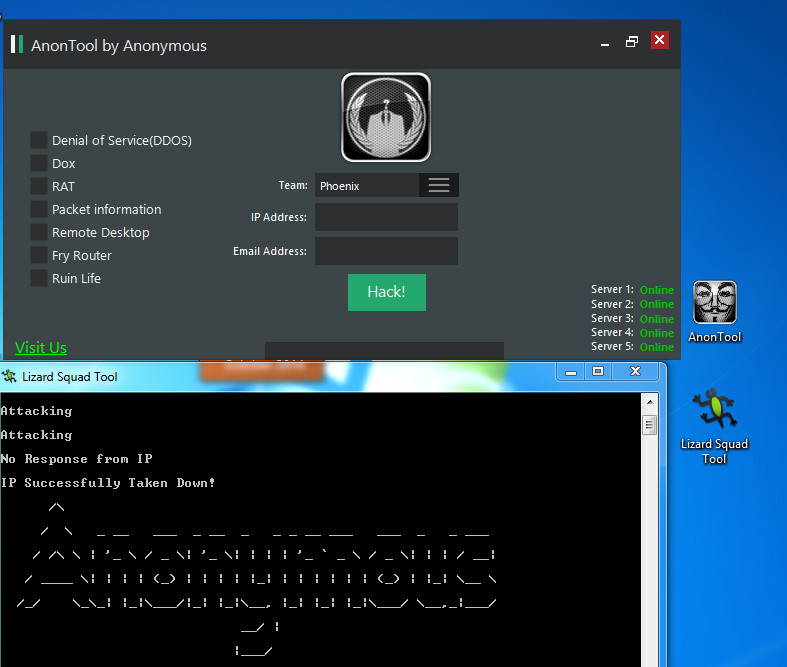
No matter what kind of device and platform you’re using, from Windows, Mac, and Chromebook to Android, iPhone, and business environments, Malwarebytes cybersecurity programs protect users from items detected as a DDoSTool. To avoid becoming an unwilling and unwitting participant in a botnet-fueled DDoS, practice the same good computer hygiene for preventing all malware infections: keep your operating system and apps up to date, and don’t click on unknown links and unexpected attachments.Īnd of course, real-time, always-on cybersecurity is a hard-and-fast must-have to protect you from DDoSTool downloads and all other associated malware threats. How do I prevent being a part of a botnet? Sometimes, a DDoS is also a strategy to distract website administrators, allowing the attacker to plant other malware such as adware, spyware, ransomware, or even a legacy virus. Unscrupulous competitors have employed a DDoS to play dirty against rival companies. There are criminals who do it to hold a commercial website hostage until they receive a ransom payment. Hacktivists will use a DDoS to make a political statement against an organization or government. The motivations behind attacking a website or service vary. Whether or not it shows these signs, the infected device periodically checks back in with the botnet command-and-control (C&C) server until the cybercriminal running the botnet issues the command for your device (along with all the other bots) to rise and attack a specific target. You get random error messages, or your fan revs up mysteriously even when you’re in idle mode. Your computer might have slowed down noticeably.
Ddos tool download#
Or you fall prey to a pop-up that displays an “urgent” message that prompts you to download some allegedly necessary antivirus security (it’s malware).Īfter the DDoSTool infection takes root, your computer remains seemingly unchanged, although there are some telltale signs. If you surf on a legitimate-albeit infected-website, you don’t even have to click on anything to have the malvertising download botnet malware.

Like emails, they can include links that attackers want you to click on, again, to trigger download of a DDoSTool. In a moment of bad judgment, you click on either an attachment or link to a website that the attacker controls, and which hosts the malware it sends you.

To that end, cybercriminals rely on a whole bag of tricks to enslave your PC, Mac, Android, iPhone, or company endpoint into their botnet. To create the botnet, attackers need to get the DDoSTool onto your system.

Instead, it lies dormant until called upon to participate in a DDoS attack. Usually, but not always, the original infecting DDoSTool does not attempt to steal data or otherwise harm the host. In the case of a DDoS attack, it can happen that tens of thousands or even millions of bots work simultaneously to send large amounts of network traffic in the direction of the target server. This zombie network of bots ( botnet) communicates with the command and control server (C&C), waiting for commands from the attacker who’s running the botnet. Attackers use what we call a DDoSTool to enslave computers and build their army. This is like having an army of zombie computers to do the attackers’ bidding. How DDoS attacks workīecause DDoS attacks require traffic to come from many sources, they are often conducted using botnets. Sources can include traditional computers and also Internet-connected devices that have been taken over as part of a botnet. The difference between DoS and DDoS attacks is whether one computer is used in the attack, or the attack is sent from multiple sources. Websites sometimes “crash” due to an incoming flood of legitimate traffic, like when a highly anticipated product is released, and millions of people visit the site at once trying to buy it. This has the effect of tying up all available resources to deal with these requests, and crashing the web server or distracting it enough that normal users cannot create a connection between their systems and the server. This is DDoS, or Distributed Denial of Service, which is a malicious network attack that involves hackers forcing numerous Internet-connected devices to send network communication requests to one specific service or website with the intention of overwhelming it with false traffic or requests. A huge influx of traffic all at once can tie up all the site’s resources and thereby deny access to legitimate users.

This type of attack involves sending large amounts of traffic from multiple sources to a service or website, intending to overwhelm it. DDoS stands for Distributed Denial of Service.


 0 kommentar(er)
0 kommentar(er)
